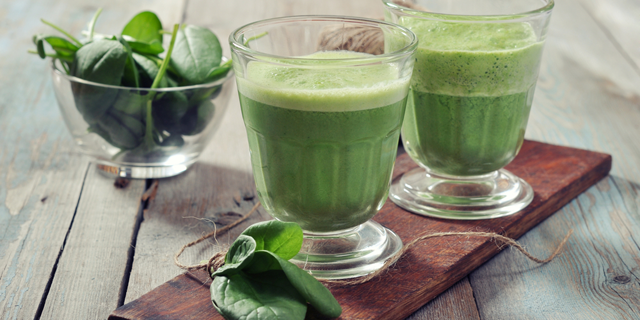I remember the first time I had a green juice. I admit; it was awful. But I had a health scare and that led me to go vegan, so I had no choice but to begin gulping green juice, and gulp it quickly! Interestingly enough, it didn’t take long for my body to start craving cucumbers, celery, broccoli, strawberries, and beets. For the first few weeks as a vegan, juices and smoothies were essential, as I would get an immediate energy boost that lasted throughout the day. It also helped my body navigate through the diet transition.
There are a number of ways you can intake your veggies and juicing is one of them. I left the hospital shortly after a surgery and felt heavy medication wasn’t the answer to my problems. Research about the food-body connection led me to discover the theories of leading a raw vegan diet – an alien concept. As a Dominican, this meant no more fried bollitos de yucca or guandules con coco with white rice! Regardless, I decided to prioritize my well-being over my food fears, and juicing helped my body adapt.
We forget that food is primarily here to nurture us and I rediscovered this idea while on my path to wellness. I learned which foods are bursting with vitamin goodness and what nutritionists meant by superfoods, most of which come from Latin America. For anyone seeking to boost their energy and try going vegan from scratch, I would recommend incorporating juices or green smoothies on a regular basis. It’s an easy and really tasty way to get in fresh fruit and vegetables during the day that help with your daily intake of vitamins and minerals. Me? I’ve been having the same smoothie for breakfast for over a year! If you prefer soft foods, you can have your juices along with soft foods like mash of auyama with spinach and figs or a nice asopao without meat.
Next a quick 101 to juicing..
[pagebreak]Why juice?
Vegetable juices are easy on the digestive system and nutrients flow directly into your cells. They’re great energy boosters that can replace caffeine or sports drinks, without the downside of symptoms like anxiety, irregular sleep patterns, or an increased heart rate. Juices are boosting with enzymes, vitamins, and minerals that are easily assimilated by your body.
What are the benefits of juicing?
Natural, plant-based vitamins and minerals are more easily absorbed by the body when they come directly from the source. Better yet, 95% of the vitamins and enzymes we need in our bodies can be found in raw fruits and vegetables. By juicing your vegetables, you can get more by doing less. For example, in a 24-ounce juice you can get the equivalent of 2 pounds of celery, 2 pounds of cucumber, and 10 pounds of spinach or kale. By juicing, you also give your digestive organs un descanso.
How many days should I juice?
It’s all a question of balance. Try incorporating some green juices before lunch to clean the digestive system and prepare it for some food. If you insist on a cleanse, try not to go past 3 days. Remember that every body is different, so learn how to listen to yours.
What vegetables should I use?
You can use whichever you like best! The difference is that some veggies have more juice than others. Cucumbers and celery will give you triple the juice than swiss chard, kale, spinach or broccoli. Dark leafy greens are essential though, in part because of their incredible properties, like a wide range of vitamins, minerals, iron, antioxidants, as well as beta-carotene.
How do I make my juice sweeter?
You can add any fruit of preference to make it sweet (apples, chinola, grapefruit) but I prefer berries because they contain less sugar concentrate and are oozing with essential antioxidants. Berries and greens make a great smoothie, but you can also mash them separately in a pilón, and add them as a topping.


![Making Mealtime Matter with La Familia: Easy Sofrito [Video]](https://thelatinkitchen.com/wp-content/uploads/2015/10/sofrito-shutterstock__0-500x383.jpg)
![Easy Latin Smoothies: Goji Berry Smoothie [Video]](https://thelatinkitchen.com/wp-content/uploads/2015/12/goji_berry-shutterstock_-500x383.jpg)
















![Fun and Fast Recipes: Fiesta Cabbage Salad [Video]](https://thelatinkitchen.com/wp-content/uploads/2015/11/fiesta_cabbage_slaw-shutterstock_-500x383.jpg)









